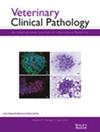Analytical and Quality Control Validation of a Novel Symmetric Dimethylarginine Assay in Dogs and Cats
Abstract
Background
An immunoturbidometric assay for symmetric dimethylarginine (SDMA) measurement on automated chemistry analyzers has recently become available.
Objective
To perform analytical validation of the EUROLyser SDMA assay in dogs and cats.
Methods
Method validation experiments were performed using stored canine and feline serum. Quality control validation was performed according to Westgard. Performance goals were derived from SDMA biological variation data for both species.
Results
Imprecision ranged from 3.7%–7.8% (dogs) to 6.0%–11.8% (cats) with a dispersion of ±35% for dogs and ±44% for cats. The assay showed linearity (up to 85 μg/dL [dogs], 75 μg/dL [cats]); the preliminary LoQ was 9.5 and 6.9 μg/dL, respectively. Recovery was 19.7% and 6.5%, respectively. Severe hemolysis resulted in a significant bias in both species. The EUROLyser method showed a significant negative proportional and constant bias in dogs and a significant positive proportional and negative constant bias in cats, compared to the comparative method. In dogs, the mean bias (−19.5%) and the bias at clinical decision limits exceeded the desirable bias; in cats, the mean bias (−4.0%) and the bias at clinical decision limits was < 8%. Because of high imprecision, the TEA that could be controlled for was 35%, with a 1–2.5 s rule using patient pools as quality control material.
Conclusions
The novel SDMA assay showed acceptable analytical performance, but high dispersion has consequences for the interpretation of results at reference limits and serial measurements. Method-specific reference intervals and decision limits should be generated for both species, particularly for dogs, given the significant bias vs. the comparative method.


 求助内容:
求助内容: 应助结果提醒方式:
应助结果提醒方式:


